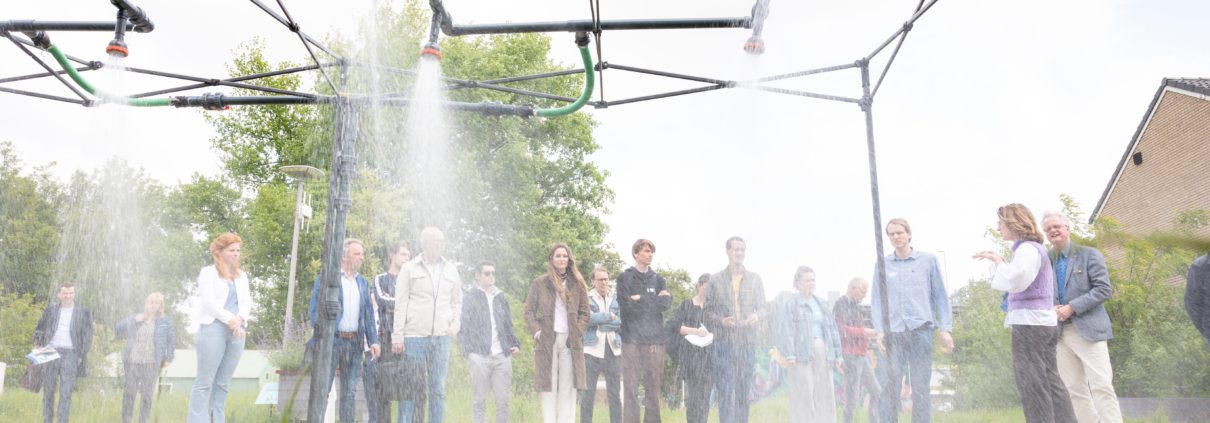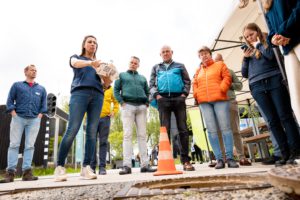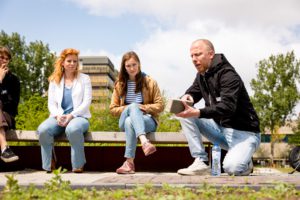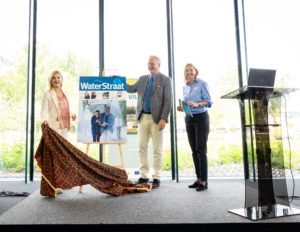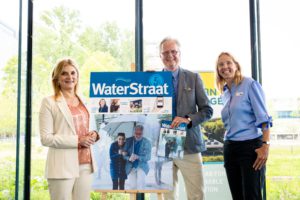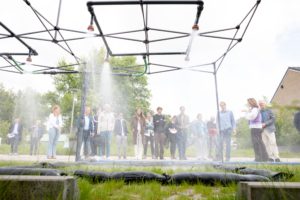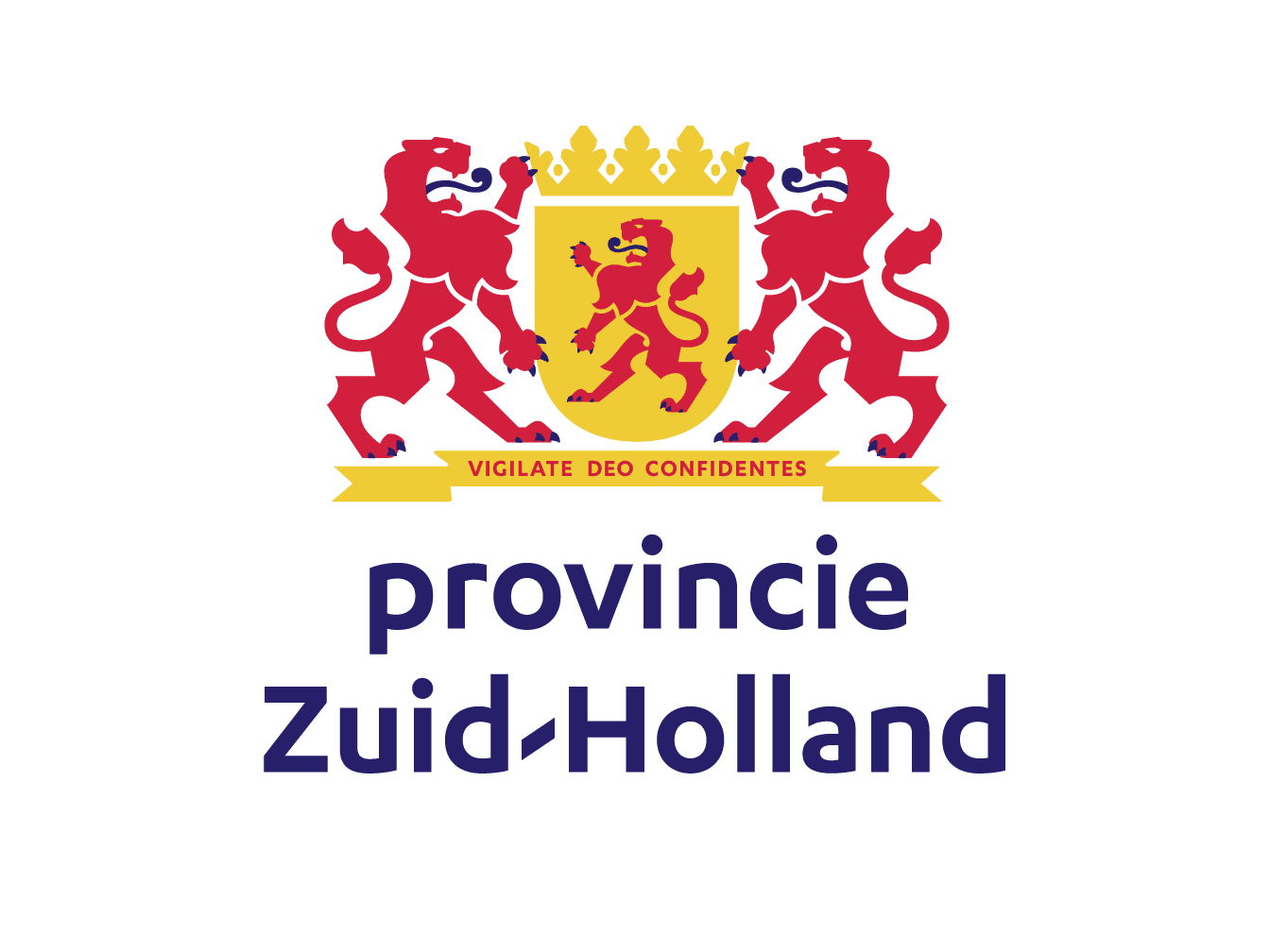De WaterStraat bestaat vijf jaar!
Ook de afgelopen tijd was het weer raak: noodweer, code geel en wateroverlast in grote delen van het land. Door klimaatverandering kunnen we rekenen op meer hitte en droogte, maar ook op meer neerslag in korte tijd. En als het regent, dan valt er veel in korte tijd. Daar is een dichtbebouwde leefomgeving met veel hard oppervlak niet tegen bestand. Het moet op veel plekken dus anders. Maar hoe dan? Vijf jaar geleden hebben The Green Village, VPdelta+ en het Hoogheemraadschap van Delfland op TU Delft Campus de WaterStraat aangelegd om ruimte te bieden aan innovatie en onderzoek die ons helpen beter om te gaan met extremer weer in bebouwd gebied. In een tijd dat ruimtelijke adaptatie nog geen onderdeel was van het deltaprogramma. Vandaag werd het vijfjarig bestaan gevierd en de behaalde successen en geleerde lessen gedeeld. Deltacommissaris Peter Glas bracht hiervoor een bezoek aan de WaterStraat.
Vijf jaar in vogelvlucht
Van Groningen tot Roermond zijn in de loop der jaren verschillende innovaties toegepast in de openbare ruimte. Soms zichtbaar, soms verstopt onder het maaiveld. Altijd ten gunste van een klimaatbestendige omgeving. Directeur van The Green Village en VPdelta+ Marjan Kreijns licht toe: “sinds 2018 zijn er 29 innovaties getest die verspreid over Nederland op meer dan 100 locaties al zijn toegepast in de praktijk. Daarmee is meer dan 350.000m2 straatoppervlak klimaatadaptief ingericht en 250.000m3 water gebufferd of vertraagd afgevoerd of geïnfiltreerd in de grond.”
Een van deze opgeschaalde projecten is de WaterTable van Trewatin. Met hun betonnen ‘watertafel’ voorkomt Trewatin schade en hinder door zware neerslag. Daarbij zorgen ze dat het waardevolle zoete water in de bodem en ondergrond zakt. De betonnen ‘tafel’-elementen creëren een holle ruimte waar grote hoeveelheden water wordt gebufferd. Een ander voorbeeld is de Urban Rain Shell, een methode voor buffering, zuivering en gebruik van regenwater. Schelpen en mineralen fungeren als natuurlijke filters. In de loop der jaren hebben duizenden bezoekers van de WaterStraat kennis genomen van wat zich afspeelt onder de verharding. Dat de proeftuin als knooppunt voor kennisuitwisseling dient voor partijen die zich met klimaatadaptatie bezighouden, vindt Ger Pannekoek van EWB minstens even waardevol als het onderzoek dat er plaatsvindt.
Intussen blijft de WaterStraat zich vernieuwen, aldus Marjan Kreijns. “Bij ons is een experiment tijdelijk; een toepassing gaat twee of drie jaar mee. We kunnen dus iets zeggen over hoe een techniek of voorziening op die termijn functioneert maar hoe iets na vijf of tien jaar onder vaker wisselende omstandigheden presteert, weten we niet. Dat maakt mensen die werkzaam zijn in het beheer en onderhoud wat huiverig voor nieuwe methoden. Heel begrijpelijk. Des te belangrijker dat innovaties buiten de proeftuin voor langere tijd worden gebruikt en tevens worden gemonitord, zodat ook duidelijk wordt hoe ze op de lange termijn presteren”.
Kennisfestival
Vandaag werd het vijfjarig bestaan van de WaterStraat gevierd met een kennisfestival. Geleerde lessen en een oproep tot actie stonden centraal: onze steden zijn nog lang niet goed bestand tegen extremer weer. De dag werd geopend door Hoogheemraad van Delfland Manita Koop, gevolgd door een keynote van dr. ir. Martine Rutten van de TU Delft. Deltacommissaris Peter Glas blikte terug op vijf jaar WaterStraat en kreeg het eerste exemplaar van het ‘Vijf Jaar WaterStraat’-magazine overhandigd. Vervolgens kregen aanwezigen de kans om langs 14 innovaties te lopen en meerdere workshops over onderzoeksresultaten en uitdagingen in de praktijk bij te wonen. Het festival werd feestelijk afgesloten door Delftse studentenband SPØTTR.
Innoveren vergt durf, tijd en inzet
We vroegen onze sprekers naar hun kijk op de WaterStraat. Deltacommissaris Peter Glas benadrukte het belang van actie: “we krijgen steeds vaker te maken met weersextremen: nat wordt natter, droog wordt droger en heet wordt heter. De Waterstraat is als proeftuin voor innovaties belangrijk voor de weerbaarheid van onze steden en dorpen. Innoveren vergt durf, tijd en inzet van alle betrokken partijen. Ik moedig alle partijen aan hier volop mee door te gaan, gezien alle uitdagingen die klimaatverandering ons brengt.” Hoogheemraad Manita Koop vulde aan: “als waterschap werken we toe richting een klimaatbestendige en waterrobuuste regio in 2050. Om de sponswerking van de regio te vergroten zijn er innovatieve producten en verstandige oplossingen nodig. Daarom zijn we als waterschap blij met de WaterStraat waar ondernemers en onderzoekers de unieke kans krijgen om innovaties te testen en door te ontwikkelen naar opschaalbare oplossingen voor een water robuuste- en klimaatbestendige leefomgeving.” Marjan Kreijns blikt terug op een geslaagd jubileum: “In de afgelopen vijf jaar hebben 40.000 bezoekers hun weg al gevonden naar de WaterStraat. We hopen dit de komende jaren alleen maar uit te breiden!”


